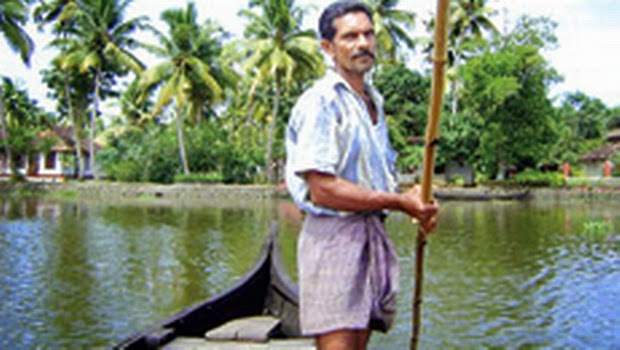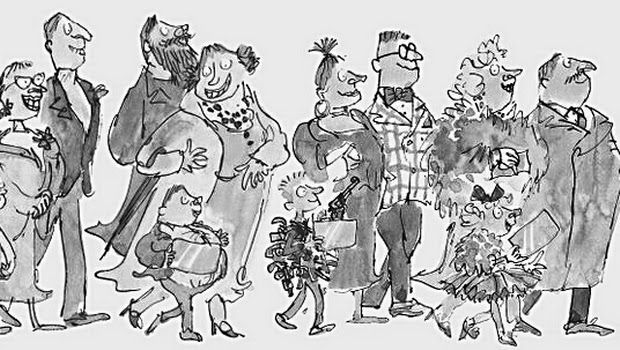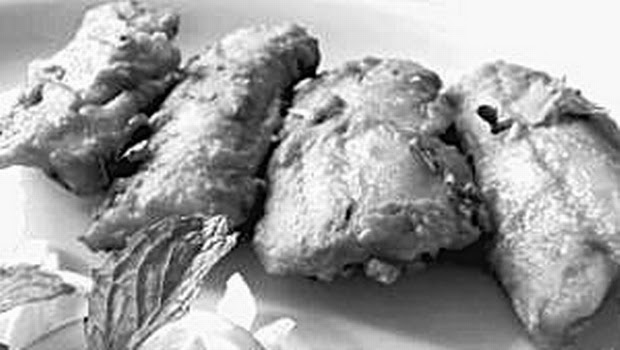While The God of Small Things created ripples in the world of literature way back in the nineties, I waited 13 years to read Arundhati Roy’s magnum opus. Today, my copy of the book is a memory of my holiday, tattered and misshapen and stuffed with stubs, pressed petals and brochures about god's own country.
For me, The God of Small Things was my faithful friend through my journey in the backwater state of Kerala. It was my travel guide, my food bible and my local encyclopedia of trivia. It was a compendium of magic words that brought the backwaters alive with an epic tale. Although the book released way back in 1997, I waited for many summers and winters to pass in order to find the perfect moment to read it. In between jobs and having liquidated all my meagre savings in order to go on a holiday, I decided to embark on my first solo trip in India. This is also when I decided to read the book.
As a woman in India, travelling alone on public transport itself can be daunting, thus a single female holidaymaker is a rare and unheard of species rarely dotting the tourist map. Yet, I persisted, having known gentle people from the state, eaten great food and heard about the remarkably low statistics of violence against women, I was convinced that Kerala was where I must go. The only companion I had was the book. And it managed to transform my ordinary holiday into an imaginary universe. The God of Small Things seemed to appear to me at every twist in the roads of Kerala. I expected the land to be no different from what Arundhati Roy described:
“...by early June the southwest monsoon breaks and there are three months of wind and water with short spells of sharp, glittering sunshine that thrilled children snatch to play with. The countryside turns an immodest green. Boundaries blur as tapioca fences take root and bloom. Brick walls turn mossgreen. Pepper vines snake up electric poles. Wild creepers burst through laterite banks and spill across flooded roads. Boats ply in bazaars. And small fish appear in the puddles that fill the PWD potholes on the highways...”
As my aircraft descended rather bumpily towards the tarmac at the Cochin International Airport, the first thing I saw through the tiny window was a lush, deep-green sea below me. Gradually miniature trees and fields and foliage appeared. Then came the discernible coconut trees waving their heads, and then came the first streaky droplets of rain forming patterns on the outside of my window. Filled with trepidation, I felt strangely comforted by the rain. I had just started reading the book and was at the point when the whole family made a trip to watch The Sound of Music one afternoon. This ended up being a pivotal moment in the book that foreshadowed later tragedies and small and large betrayals. I left the airport humming old tunes from the Hollywood classic just like Estha, one of the fraternal twins who make up the cast of characters that populate the family home at Ayemenem. As I collected my bags, my thoughts still scattered all over wondering whether cinemas like Abhilash Talkies still existed in 21stand versatility of the Keralite mundu after witnessing the ease with which the men all round me irrespective of age and body types showed off their legs. I now also had a mental picture for Velutha, the untouchable antihero of sorts who impresses in his mundu and white shirt as he marched in a party demonstration with a red flag.
I was also thinking about how the afternoon sky would change it colours at random as the sun played hide and seek with the clouds. A few afternoons later as I saw the sky turn red with an impending storm, I remembered another red sky that Rahel (the other twin) sees through her cheap red plastic sunglasses which gradually turns to a sickly orange as her brother Estha is abused by the creepy Orangedrink Lemondrink man.
As I travelled through the banana-fronded backwater country to the secluded Phillip Kutty’s farm set on a manmade island in the middle of an exceptionally large canal off the Vembanad Lake, I realized that I was just a few kilometers from Roy’s Ayemenem and in a little town just like it. Just like the book, this too was a place where life happened on the backwaters. Thus my first ride on a country boat or vallom to see the rising moon was a moment enhanced by Roy’s lyrical poetry. I dipped my hand in the waters and the words came to life.
“It was warm, the water. Greygreen. Like rippled silk.
With fish in it.
With the sky and the trees in it.
And at night, the broken yellow moon in it.”
I spent the balmy nights reading the book out on the porch of my room overlooking the silver waters of the backwaters by the light of a single lamp casting its yellow pool in the darkness and bringing all the silken winged moths to my door to die. I could smell the brooding air of the of Ayemenem. I could hear the fluttering of Pappachi’s moth. My heart ached for Ammu. Just like it ached for the young widow Anu Mathew (the owner of the wonderful homestay that I was staying in). She was a brave and feisty lady who was fulfilling her husband’s dream all by herself. Her farm, where I spent three lovely days, radiated all her family’s warmth and reflected the hopes her husband had for the place before he suddenly passed on.
All these thoughts played into my understanding and love for the book. As I ate homemade banana jam for breakfast, I thought of the Paradise Pickles and Preserves run by Mammachi and the strange consistency of banana jam/jelly. I learnt about the history of the Syrian Christian community through the food that I gorged on every day. I learnt about the produce of the land through Anu Mathew and her mother-in-law over shared conversations on the dinner tables. In the dark hours of the night, Arundhati Roy’s magical prose brought me closer to the land I was passing through. She gave me a language to tell my story about Kerala to the world. I am glad I had waited to read it all these years for now I remember it like no other. The characters in this book gave me a few oddball companions on solitary walks and the story itself became a bookend for my own journey into this beautiful country ruled by the god of small things.
This was published in the New Indian Express, Bangalore on 25 September 2014






.jpg)
